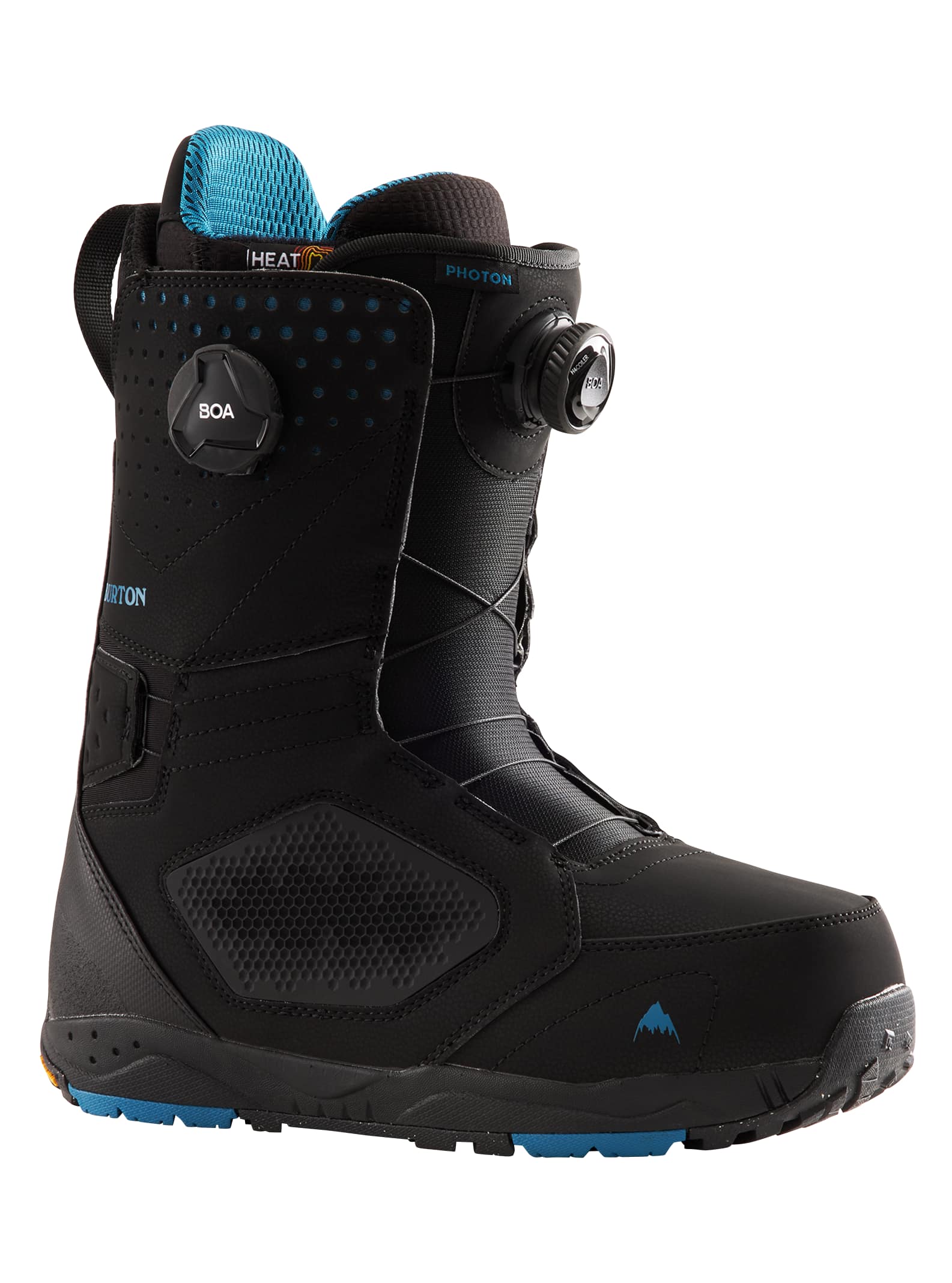
New England ski resorts offer a variety of options, including picturesque views of Northeast's greatest mountains and lakeside ski towns. They also have a unique culture, which embodies the spirit of skiing. Although the West is more well-known, New England has many hidden gems that offer great snow, terrain, and prices.
Top ski areas of the east coast
There are many great ski areas all over the country. These ten best New England spots offer everything a novice skier would need, including reliable powder and classic ski culture. These mountains are worth visiting, whether for a day or a weekend.
Stowe Mountain is Vermont: New Englanders love Stowe Mountain because of its excellent weather and great snowmaking. It has 66 trails and 10 lifts, including two high-speed quads to the summit, and it's one of the easiest major mountains to reach from Boston.
Mount Sunapee in New Hampshire: This ski area is easy to reach from Boston and consistently ranks among the East's best for grooming and snowmaking. There are a number of trails that you can choose from, including the Long John trail, which is for beginners and is accessible via the top of a three mile-long lift.

Killington Vermont: Killington has everything you need from beginner slopes and steeps. It offers a wide variety of off-slope sports, such as snowmobiling or tubing, making it an excellent option for families.
Wildcat Mountain, New Hampshire. Wildcat is the perfect place to go if you want a bit more challenge than Killington. This mountain has long, continuous fall-line trails that drop down the side to deep bump runs and open corduroy lands. It is the perfect place to grab your skis.
Sugarloaf (Massachusetts): This is the only East mountain with lift-serviced alpine terrain. Sugarloaf, at 4,237 feet in elevation, is one of the most difficult ski terrains in the state. There are 50 degree steeps, late-season crevasses, avalanche danger, and ice-bulge, cliffs.
Loon Mountain, New Hampshire: For the best beginner-to-intermediate slopes in the region, head to Loon. The mountain has a six-pack lift with high speed and night skiing.
Bretton Woods (New Hampshire): This popular area is for ski enthusiasts and bros. It boasts a reputation of reliable snowmaking and has 62 trails.

Vermont Wintersports: There are many great spots in Vermont for cross-country or freestyle skiing. The Nordic Ski Center offers cross-country trails covering 37 miles. The Trapp Family Lodge, a popular spot for fat biking and other outdoor activities, is also available.
New England is home to a flourishing ski culture. These ten resorts are great for anyone looking to take in the natural beauty of the mountains while making new friends.
FAQ
What documents should be kept handy while on the road?
To make it easy to find important documents on the road, keep copies at home. If you plan on using an ATM machine, you may want to keep a copy of your passport, driver’s license and other official identification cards.
It's always a good idea to carry a photocopy of your passport with you so it can be used as proof of identity if needed.
Make sure to keep a copy of your itinerary and any reservations. These will help to keep track of where you are going and what sights you're planning to see.
This should be in addition to the original flight ticket and hotel reservation details. You can contact your family back home easily if you are in trouble.
Finally, it's always a good idea not to leave anything valuable unattended. Keep your valuables safe by storing them in a money belt or inside your luggage.
Check your bag before you go to prevent losing expensive items.
Remember: It's always safer to keep things simple than to try to over-plan everything.
Enjoy your journey and relax!
What should you bring on vacation?
Know what you want to do while on holiday. Not just packing clothes. You also need to consider where you are going and how long you are staying there.
It is important to consider what kind of activities you want to engage in. Scuba diving is a great option if you're going to exotic destinations. If you plan on staying longer, you may want to attend local festivals.
Tell your loved ones if there are any health concerns so they can plan for you.
When traveling, what should you remember?
Traveling is a time when you are often faced with situations that require quick decisions. Prepare to be flexible.
It is possible to be stuck anywhere for hours, days or even weeks. If you've planned ahead, you'll have food, water, shelter, and a place to sleep. You may need to improvise if you don't plan ahead.
In these situations, you will probably need to rely upon what you know best. This means that you will need to make quick decisions based on your intuition and experience.
Sometimes you just can't make a choice. For example, you could be stranded in an area without cell phone service, running out of gas, or having been robbed. You will need to be flexible to any situation that presents itself.
It is important to remain calm, keep your eyes on the prize and be decisive. Don't panic. Instead, be calm and focus on what you can do.
You can choose which direction you want to go if you're lost among the woods. If you are hungry, you can eat mushrooms or berries. You can drink rainwater, or melt snow if your thirst is great.
Or if you're tired, you can rest. If you're cold, you can bundle up. If you get wet, you can put on clothes. Whatever your choice, staying positive will help you feel better.
Statistics
- Alcoholic beverages with more than 24% but not more than 70% alcohol are limited in checked bags to 5 liters (1.3 gallons) per passenger and must be in unopened retail packaging. (tsa.gov)
- They're also likely to offer babysitting services, in case you'd like to have dinner one night after 7 p.m. (travelandleisure.com)
- Between the ages of 11 and 13, kids, or tweens, will likely want some autonomy but also need boundaries. (travelandleisure.com)
- Case in point: the private island of Ilha Caldeira, less than seven miles off the coast as part of the Primeiras and Segundas Archipelago, is located within the marine-protected area with 20 percent of the country's intact living coral. (travelandleisure.com)
- Pack sweaters, jackets, and underwear in reusable compression bags creating up to 75% more space in your luggage. (wikihow.com)
External Links
How To
How to plan for your next vacation
Planning a trip involves many things like booking flights, hotels, car rentals, activities, etc. It includes important considerations such a budget, destination, weather forecast, time frame, etc.
These are important points to remember when planning your next vacation.
To ensure you get everything right, we have created a step-by-step guide to help you plan your next vacation. This guide is based on customer feedback and our experience. We hope that you will find the following guide useful in planning your next vacation.
Steps:
-
Plan your Budget - Planning your budget is one of the most important steps in preparing for a trip. Before you start to think about where to go or what to do, it is important to determine how much money you have available for your trip. If you don’t have enough money, it might be necessary to cancel your trip.
-
Book Your Tickets - Once you've decided on your budget and set your priorities, booking your flight tickets is the first thing that you should do. Find the best price and lowest flight deal. Check to see if there are any seasonal specials offered by airlines. These deals could help you save a lot of cash.
-
You can choose your destination - Once you have purchased your ticket, you need to decide where you would like to go. Multiple factors come into play when choosing your destination, including location (where you're going), climate (what season to visit), culture (how friendly people are), and cost (how affordable it is).
-
Find Accommodations. After selecting your destination, the next step is to search for accommodations. There are many choices for accommodation. You can choose from affordable hostels or luxury suites. Choosing the right type of accommodation depends on your needs and preferences. A hotel is not the best choice if you want to be close to the city centre. On the other hand, if you prefer quiet places away from crowds, a homestay may suit your requirements better.
-
Select Activities and Attractions. Now, after you've selected your accommodation it is time to pick the activities or attractions that you would like to add to your itinerary. Depending upon the length of your stay you have two options: choose just a few activities, or add many more to your itinerary.
-
Plan Your Trip - Once you have decided on the attractions and activities you want to include, you can now plan your itinerary. Sticking to a plan will help you maximize the value of your trip. However, if you're free to move around at your convenience, you can enjoy your trip even more.
-
You can create an itinerary by creating itineraries. It is important to write down everything you need, from accommodation to meals, to activities to restaurants, and to create a list.
-
Research Online - Before leaving for your trip, research online so you won't miss anything. Review and read testimonials to learn what travelers have to say about a destination. This will enable you to plan accordingly.
-
Be Light - Don't pack too much. This is the biggest mistake people make when packing. Don't bring five clothes. Bring three. Wear clothing that is appropriate for the climate you are visiting.
-
Be Prepared - Finally, be prepared! Make sure you have everything prepared before you go. It's not a good idea to spend time looking for documents while you are still on the move.